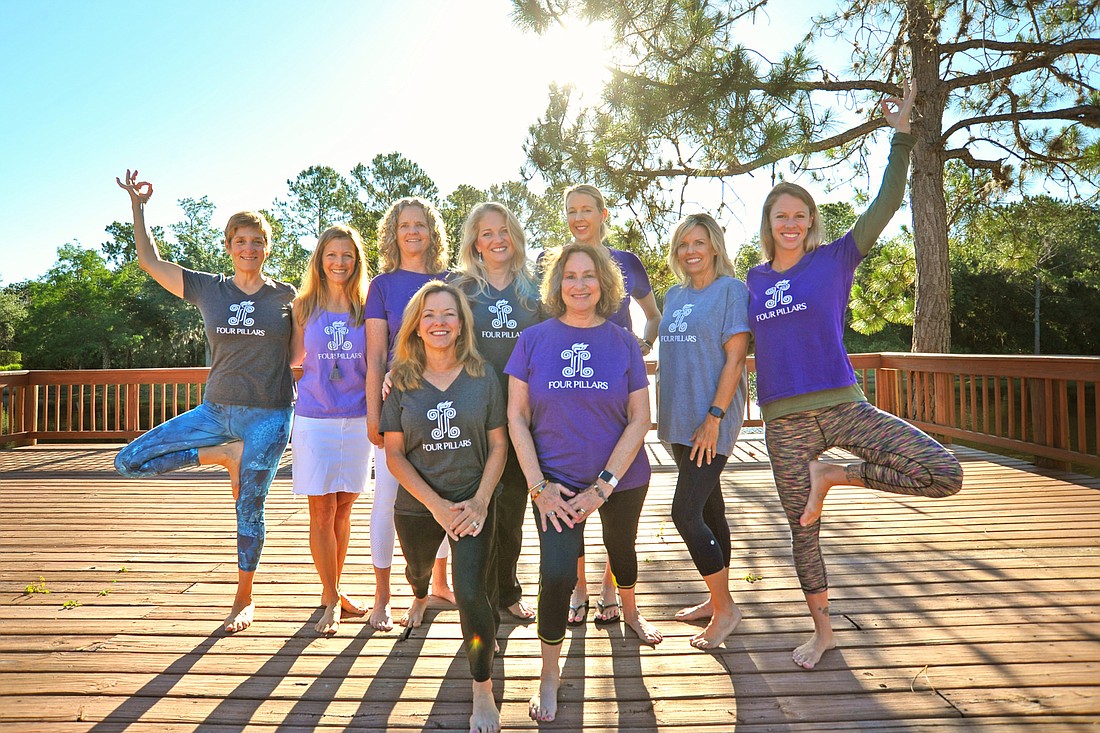- April 25, 2024
-
-
Loading

Loading

Being stuck at home impedes many aspects of everyday life, but it does not have to affect your exercise.
In fact, staying active might help you get through the new social distancing normal. Sarasota trainer Yvette Bernosky, of Yvette’s Health & Fitness in Sarasota, recommends everyone stick to their exercise schedules during the new coronavirus pandemic, especially people who are aging.
“As we get older, we lose a pound of muscle and gain a pound of fat every year on average,” Bernosky said. “Those numbers can double for women in menopause. Some people defy the odds genetically, but we all need to work to maintain and build strength.”
Bernosky said one of her clients, an 80-year-old woman, had a compression fracture in her spine, had a rod in one hip and had the other hip replaced. The fracture was causing her pain. The pair met three times a week doing strength exercises, and even though they were uncomfortable at first, they eventually healed the pain in her spine. Exercises can also slow the development of — though not heal— arthritis pain and help people keep a large range of motion.
“I will hear people say, ‘I can’t exercise; my body hurts,” Bernosky said. “But it is also going to hurt if you don’t fix the problem you have. Given the alternative, don’t you want to be able to live, to have a higher quality of life?”
Bernosky said that people need to listen to their bodies and figure out what routine works for them because everyone’s body responds to things differently. She added that there are basic things everyone can do to get started on a good path while at home, such as squats. If a normal squat is too much at first, she said, take a chair (or even your toilet), sit on it, then stand back up, and repeat. Squats work all the muscles in your legs, Bernosky said.
Other options include modified crunches, planks or calf raises, which people can do by placing a third of their foot on a ledge and holding it there. Bernosky said the best practical exercises might be things that work multiple parts of your body at once, such as standing on one foot while tossing a ball with someone. These things cause your neuromuscular system to fire multiple messages across your body to accomplish the task; the same thing that happens, for example, when you trip over a curb, and your ankles, knees and hips are all affected. The more you practice sending these messages, the faster your response times will be.
Sometimes the hardest part is getting motivated to move. The National Institute on Aging at NIH offers exercise scheduling tips on its website, with an emphasis on goals. Without both long-term and short-terms goals, the site reads, it can be difficult to begin. Make a plan that is realistic based on your starting point, and gradually increase the intensity to fit with your level of comfort.
No matter what you do, it is helpful to do something. Writing at The Conversation, sports scientists Tamara Hew-Butler and Mariane Fahlman said exercising three times a week can improve the body’s immune system. They also stress that people should eat well and get plenty of sleep, and keep social distancing procedures intact — though it is fine to go for a walk or jog in your neighborhood by yourself.